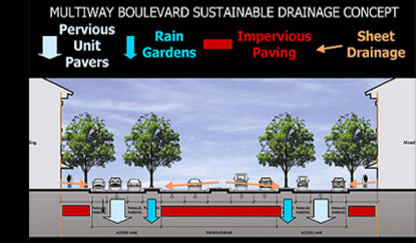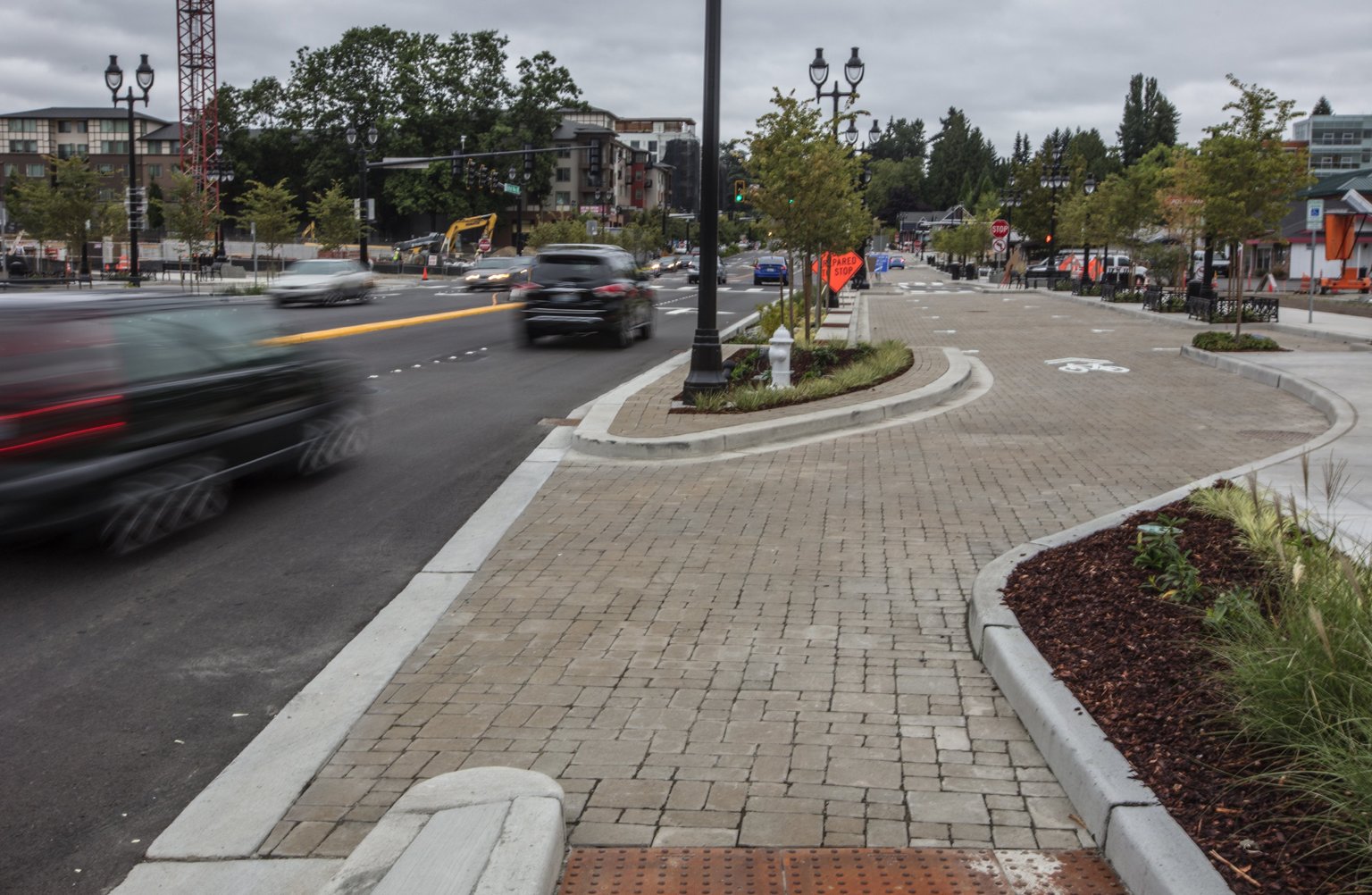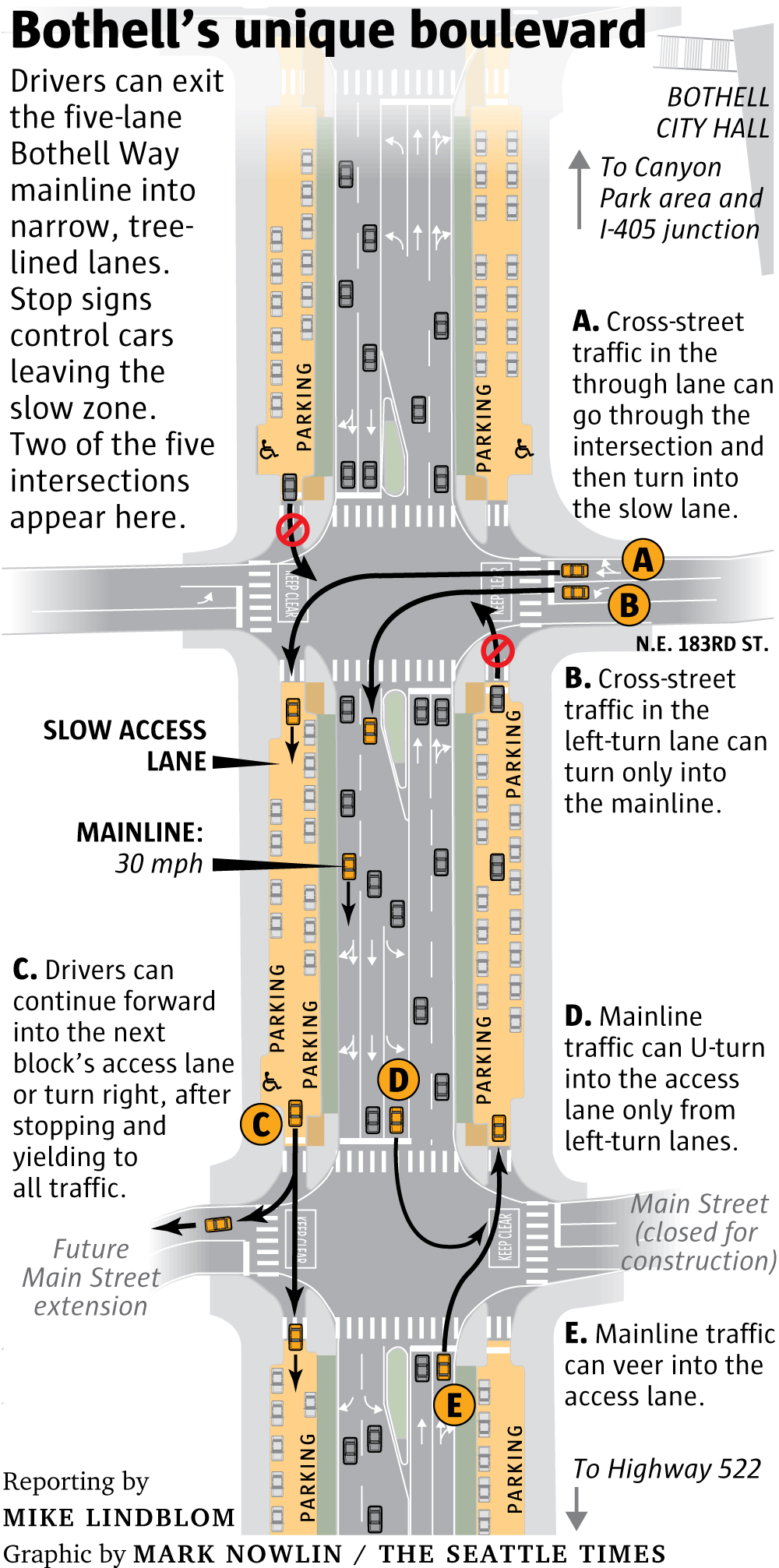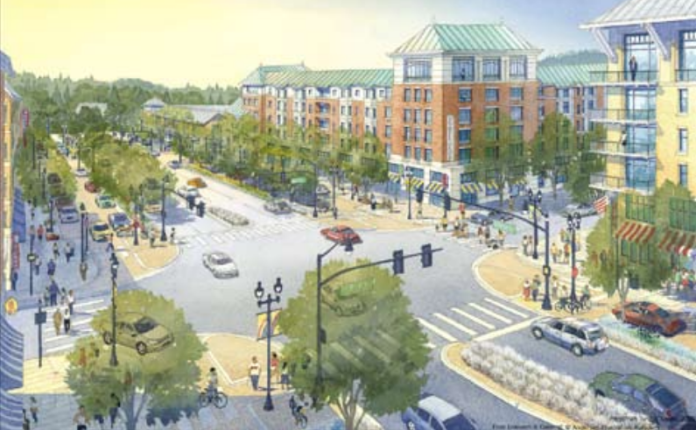Don’t say they didn’t ask for it.
First, Bothell residents asked the City of Bothell to design Bothell Way NE as a walkable street to keep the walkable vibe of old downtown.
Then, Seattle Times transportation reporter Mike Lindblom, who detailed the not very walkable design, asked to hear The Urbanist’s critique.

While the boulevard looks pretty with its lanes of trees, Bothell has not created a “Complete Street” in producing this 11-lane “multiway.” Seeking to balance desire for a walkable vibe with needs of automobiles, they’ve create a dressed-up car sewer–still with some STROAD tendencies and a parking focus. The over-designed street will fail to create a safe all ages and abilities bicycling connection. How are cyclists supposed to feel comfortable and be safe in double-door-zone sharrows that interact with pocket slip roads–effectively off-ramps?
By creating an entirely new concept, Bothell is also asking motorists to learn many rules that won’t necessarily come naturally. At low speeds, these awkward turning movements could allow for mistakes, but add speed and collisions will surely occur. Watch the video below (from the City of Bothell’s project website) to see all the conflict points a multiway boulevard creates.
The design should make looking for parking less stressful for motorists, but trying to direct bicyclists though the same area doesn’t seem like a recipe for success. With all that space, why not create protected bike lanes? Perhaps the parking won’t be heavily used at many times of the day, which will decrease the chance people bicycling will be doored but may encourage motorists to pass bicyclists or drive faster.

For pedestrians, five lanes of mainline traffic is still a long crossing distance, especially when added to the two lanes for the pocket slip roads. It’s nice to see curb extensions, but the curbs on the pedestrian islands could be extended even further to slow turning movements, particularly if reckless turns prove common. It’ll also be interesting to see if motorists confused with the turn restrictions (i.e. no left from the outer parking lane) wreak havoc for pedestrians and other motorists.
random add on: I also found the "bike way" "slow lane" "Parking thing" to be very confusing. Drivers also behaved poorly in it.
— Robert Getch (@StumpToEmerald) September 6, 2017
The design has some positives beyond mere beautification: 14-foot sidewalks, 10-foot travel lanes in the parking zones, and the pervious surfaces and rain gardens should decrease stormwater runoff. It’s admirable that Bothell is thinking big and planning for the downtown it wants to have in the future. Taking down the SR-527 signs helps delineate that Bothell doesn’t want the road to feel like a highway through its booming downtown. If motorists obey all the proper multiway movements and bicyclists get a separated facility, the Bothell Way NE boulevard could be quite successful. Some placemaking along the edges of the boulevard would also help draw in pedestrians. Bothell tried for the grand Parisian boulevard approach, but in this acrobatic manuever for a carcentric suburb, it didn’t nail the landing.

The boulevard planning is also admirable because it seeks to pair multimodal transportation improvements with urban mixed-use development. It used to be improvements like these just happened in the normal course of city making. Now, healthy urban growth gets compared to nuclear explosions. “Like the South Lake Union district of Seattle, you get a sense that Bothell was nuked and its core enlarged from ground zero,” Lindblom wrote. I don’t think Lindblom is saying growth is as devastating as nuclear weaponry, but rather trying to reflect attitudes on the ground–some people do feel it’s a big magnitude of change. It’s good to see Bothell growing. Suburbs can’t be frozen in amber forever.
Doug Trumm is publisher of The Urbanist. An Urbanist writer since 2015, he dreams of pedestrian streets, bus lanes, and a mass-timber building spree to end our housing crisis. He graduated from the Evans School of Public Policy and Governance at the University of Washington in 2019. He lives in Seattle's Fremont neighborhood and loves to explore the city by foot and by bike.


